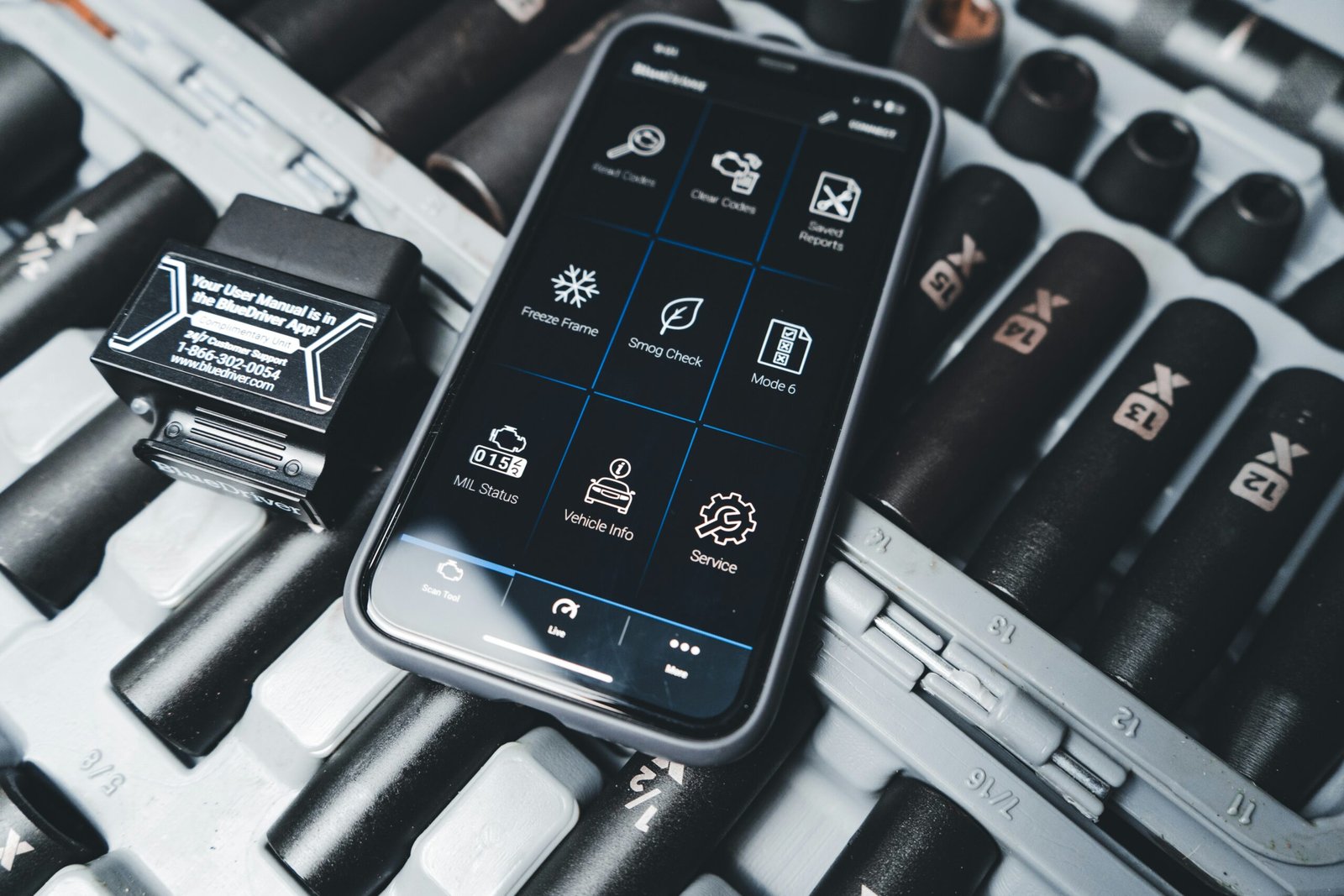
Introduction to Phone Viruses
Phone viruses represent a significant class of malware that specifically targets mobile devices, potentially causing a range of issues from privacy violations to performance degradation. Unlike traditional computer viruses, phone viruses exploit the unique features and functionalities of smartphones, making them susceptible to various forms of infection. These viruses can infiltrate devices through numerous vectors, including malicious applications, compromised websites, or even via Bluetooth connections when devices are set to visible mode.
Once a phone virus successfully compromises a device, the consequences can be quite detrimental. Users may notice a range of symptoms that signal an infection. One of the most common indicators of a virus-infected phone is a noticeable decline in performance. Applications may take longer to load, and the overall responsiveness of the device can diminish substantially. Another frequent symptom is the appearance of unexpected advertisements that intrusively pop up, indicating potential adware or spyware infections. Such ads may not only disrupt the user experience but could also lead to further exposure to malicious content.
Moreover, a virus can lead to excessive battery drain, as infected applications or processes engage system resources inefficiently. Users may find themselves charging their phones more frequently, indicating an underlying issue. Additionally, the spontaneous installation of unfamiliar applications or the alteration of device settings can also hint at a virus presence. Recognizing these signs is crucial; addressing phone viruses promptly can mitigate risks and preserve the integrity of personal data. Understanding the nature of phone viruses and their effects is essential for maintaining a secure mobile experience.
Identifying the Symptoms of a Virus
Identifying whether your phone is infected with a virus is a crucial first step in addressing the issue effectively. There are several major signs that may indicate a malicious presence on your device. One of the most common symptoms is unusual app behavior. If certain applications are crashing unexpectedly, exhibiting erratic performance, or launching on their own, this could signal that they are compromised. Applications designed for legitimate purposes may start to function improperly if they have been infiltrated by a virus.
Another significant red flag is excessive data usage. If you notice that your data consumption has sharply increased without a corresponding increase in your usual activities, this might be a clue that malware is operating in the background, consuming data for unauthorized purposes. Malware can often use data surreptitiously, leading to unexpected charges from your mobile carrier. Monitoring your data usage regularly can help you spot such irregularities early on.
Strange pop-ups can also be indicative of a virus infection. Frequent pop-up ads that do not correlate to the apps you are using could suggest that adware is present on your device. These intrusive advertisements can not only be annoying but can also lead to accidental clicks on potentially harmful links, further exacerbating the situation. Lastly, decreased battery life is a prevalent symptom of a virus. If your device’s battery drains faster than usual, it may be working overtime due to malicious software running in the background. By recognizing these symptoms—unusual app behavior, excessive data usage, strange pop-ups, and decreased battery life—you empower yourself to take necessary action promptly, should you suspect that your phone has contracted a virus.
Backup Your Data
Before undertaking the process of virus removal from your mobile device, it is imperative to back up your data. This step not only ensures your important files remain intact but also provides a safety net against any unforeseen issues that may arise during the removal process. Here are step-by-step instructions to assist users in backing up their data effectively on both Android and iOS devices.
For Android users, there are several methods available. One common approach is to utilize Google Drive, which allows users to back up contacts, photos, and application data. To initiate this process, follow these steps: open the Settings app, scroll to ‘System,’ select ‘Backup,’ and ensure ‘Back up to Google Drive’ is enabled. You can manually back up now by selecting ‘Back up now.’ Additionally, connecting your device to a computer via USB will enable you to transfer important files directly, providing an added layer of security through local storage.
iOS users can benefit from iCloud or local backups through iTunes. To back up using iCloud, navigate to Settings, tap on your name at the top, select ‘iCloud,’ and then ‘iCloud Backup.’ Turn it on and select ‘Back Up Now’ to begin. For users who prefer local backup, connect your device to a computer and open iTunes. Select your device, then choose ‘Back Up Now’ to save your data directly to your computer.
Regardless of the platform, it is essential to regularly back up your data to ensure that you have the latest version of your important files. Additionally, consider backing up critical documents and media to external storage devices. By following these methods, you can secure your data efficiently, ensuring it remains safe throughout the virus removal process.
Safe Mode: A First Step Towards Recovery
When dealing with a phone virus, one of the initial and most effective steps is to enter Safe Mode. Safe Mode is a diagnostic mode that starts your device with only the essential system applications, allowing you to troubleshoot potential issues without interference from third-party apps. By utilizing Safe Mode, you can effectively identify and manage apps that may be contributing to your phone’s compromised performance or spreading malicious software.
The process of entering Safe Mode can vary slightly depending on your device’s model. For Android smartphones, you can generally access Safe Mode by pressing and holding the power button until the power menu appears. Once the menu is visible, tap and hold the “Power off” option until you see the prompt to restart in Safe Mode. Confirm your selection, and your phone will reboot, displaying “Safe mode” in the corner of the screen. For iPhone users, Safe Mode isn’t officially supported, but you can troubleshoot issues by restarting the device and seeing if the problem persists without the influence of certain apps.
While operating in Safe Mode, it is crucial to evaluate the applications installed on your device. Look for unfamiliar apps or those that were installed around the time your phone began exhibiting symptoms of viral infections, such as sluggish performance, unexpected advertisements, or battery drain. If you identify suspicious apps, uninstalling them can significantly enhance your device’s security. Prioritize removal of apps from sources outside of official app stores, as they pose a higher risk of harboring malware.
By leveraging Safe Mode, you take a critical first step towards recovering your device from a virus infestation. This method not only alleviates immediate concerns but also equips you with insights into the necessary actions to ensure a safer, virus-free smartphone experience going forward.
Uninstalling Suspicious Applications
When dealing with a phone virus, one of the first steps to consider is identifying and uninstalling suspicious applications that may have contributed to the malicious activity. A thorough assessment of installed applications can help in pinpointing any potential threats. Start by reviewing your recent downloads; many malware applications masquerade as legitimate software, but they often appear in your application history unexpectedly. If an app was downloaded recently and you do not recall installing it, this could be an immediate red flag.
Next, examine the permissions requested by each application. Legitimate applications typically require a standard set of permissions that align with their functionalities. For example, a weather app may request access to your location but should not demand permissions related to your contacts or messages. If you find that an application is requesting permissions that seem excessive or unrelated to its purpose, it is prudent to consider uninstalling it.
Additionally, reviewing app ratings and feedback in the app store can provide valuable insights into the safety of an application. Apps with low ratings, numerous negative reviews, or reports of malicious behavior are typically best uninstalled. Consider taking the time to read user comments to understand their experiences with the application. Moreover, many app stores now include malware detection tools that warn users about suspicious applications during the download process; take heed of these alerts as well.
In summary, proactively managing your installed applications by monitoring recent downloads, scrutinizing permissions, and leveraging user feedback can significantly enhance the security of your device. By removing potentially harmful applications, you take a vital step towards safeguarding your smartphone from viruses and other forms of intrusive software.
Using Built-in Virus Scanners
Modern smartphones are equipped with sophisticated built-in security features that serve as the first line of defense against potential malware and viruses. Both Android and iOS operating systems come with their own set of tools designed to detect, remove, and prevent threats. Understanding how to utilize these resources effectively can empower users to take control of their mobile security without incurring any costs.
For Android devices, Google Play Protect is a prominent security feature that scans apps for harmful activity and alerts users of any potential threats. To run a virus scan using Google Play Protect, users should navigate to the Google Play Store app, tap on their profile icon, and select “Play Protect.” From this menu, they can initiate a manual scan. If any harmful apps are detected, users are prompted to remove them. Moreover, Android systems frequently update this feature, enhancing its capability to recognize new virus patterns.
On iOS devices, the approach towards security is slightly different, given Apple’s closed ecosystem. While Apple does not offer a traditional virus scanner, the integrated security features monitor app behavior and continuously check for any suspicious activities. When users download apps from the App Store, they undergo a strict review process that reduces the likelihood of malware. However, users are encouraged to regularly update their devices to benefit from the latest security patches, which can prevent potential threats from breaching their device. This proactive approach significantly decreases the chances of virus infection.
Overall, by utilizing the built-in virus scanning tools provided by their respective operating systems, users can effectively safeguard their devices against viruses and other malicious threats. Taking advantage of these free resources is a commendable step toward maintaining mobile security.
Installing Third-party Antivirus Software (Free Options)
In the quest to maintain the security and performance of smartphones, installing third-party antivirus software can be a viable solution. Numerous reputable free antivirus applications are available, designed to help users detect and eliminate viruses without incurring any costs. These tools not only enhance device security but also provide essential features that can prevent future issues.
One widely recognized option is Avast Mobile Security. This application offers a comprehensive suite of features, including virus scanning and removal capabilities, real-time protection against malware, and anti-theft functionalities. Avast Mobile Security is user-friendly, making it suitable for both tech-savvy individuals and those less familiar with technology. However, its free version may include ads, and some advanced features are locked behind a paywall.
Another free alternative is Bitdefender Antivirus Free. Known for its lightweight design, this software does not compromise device speed while providing robust scanning abilities and immediate protection against threats. It operates seamlessly in the background, ensuring that malicious applications are dealt with promptly. Nevertheless, the lack of a more extensive feature set compared to premium versions might be a drawback for some users.
Finally, Sophos Intercept X for Mobile is a noteworthy option, focusing on comprehensive protection and privacy features. It includes web filtering, app security, and a privacy checker to help users maintain their personal information security. While the application is free, some users may find the interface less intuitive than competitors, requiring a learning curve to maximize its potential.
Overall, these free antivirus applications offer essential protection against potential threats. Users are encouraged to evaluate their specific needs and preferences when selecting the right software to secure their devices effectively.
Resetting Your Phone: A Last Resort
In some cases, removing a phone virus may require drastic measures, such as resetting your device to its factory settings. This action wipes all content and settings, potentially eradicating any malicious software. However, it is crucial to consider this option only after exhausting all other virus removal alternatives, such as scanning with antivirus software or uninstalling suspicious apps. Resetting should be viewed as a last resort when the device is compromised beyond reasonable repair.
Before proceeding with a factory reset, it is imperative to back up essential data, such as contacts, photos, and important documents. Both Android and iOS devices offer integrated options for backing up data; utilizing these features ensures that valuable information is not permanently lost. Once the data has been secured, you can begin the reset process.
For Android devices, follow these steps to perform a factory reset:
- Open the “Settings” app.
- Scroll and select “System.” Alternatively, the option may be labeled “General Management.”
- Tap on “Reset” or “Reset options.”
- Select “Factory data reset.”
- Review the information provided and tap “Reset Phone” to initiate the process.
For iOS devices, the steps are as follows:
- Open “Settings.”
- Tap on “General.”
- Scroll down and select “Transfer or Reset iPhone.”
- Choose “Erase All Content and Settings.”
- Confirm your selection to begin the reset.
After performing the reset, the phone will restart as a new device, prompting for initial setup procedures. This step marks a significant point in virus removal, potentially restoring your device’s functionality. However, it is advisable to approach this measure with caution and ensure that it is genuinely the most viable solution.
Preventing Future Viruses
To maintain the integrity of your smartphone and prevent future virus infections, it is crucial to adopt a multi-faceted approach to security. First and foremost, downloading applications exclusively from reputable sources, such as the official app stores for iOS and Android, is essential. These platforms carry out security assessments on apps, mitigating the risk of downloading malicious software. Third-party websites may offer enticing apps but could be breeding grounds for harmful viruses.
Another vital step in ensuring your phone’s safety is the adoption of strong, unique passwords for all accounts. Weak passwords can be easily compromised, providing malicious actors with access to sensitive information or the ability to install harmful applications without your consent. It is advisable to use a combination of uppercase and lowercase letters, numbers, and special characters to strengthen your passwords. Furthermore, utilizing a password manager can assist in generating and storing complex passwords securely.
Be exceptionally cautious with links and attachments received in messages or emails, particularly if they are from unknown sources. Cybercriminals frequently use phishing methods to trick users into clicking on malicious links that can install viruses on their devices. Establishing a habit of verifying the legitimacy of the sender and the content can prevent accidental downloads of harmful software.
Regular software updates are equally important, as they often include critical security patches that defend against newly discovered vulnerabilities. Ensuring that your mobile operating system and applications are always up-to-date will significantly bolster your phone’s defenses against various threats.
Incorporating these best practices into your smartphone usage will play a significant role in safeguarding it from future virus infections, ultimately leading to a more secure and efficient user experience.






